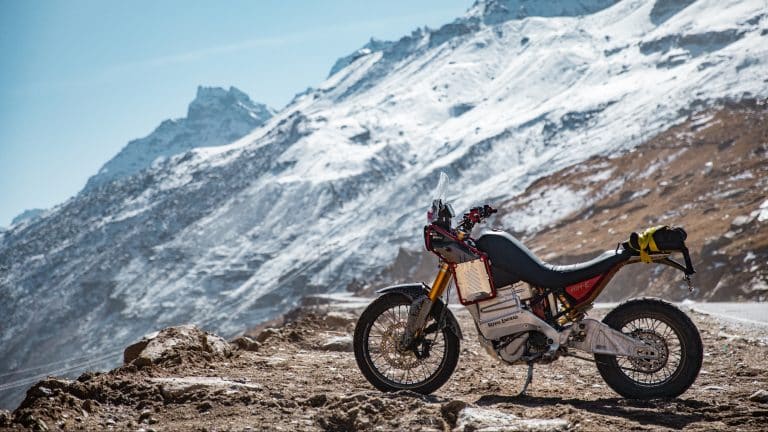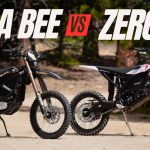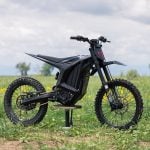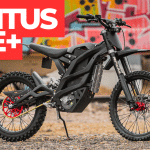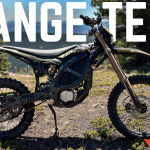The Royal Enfield Electric Himalayan prototype serves as the brand’s technological “testbed,” but what does it mean for future of Enfield’s electric motorcycles?
Royal Enfield’s uber-popular Himalayan has been an appealing proposition to adventure riders since its launch back in 2016. It’s dirt cheap, reasonably capable in the dirt, and sports handsome utilitarian style courtesy of its chief designer Pierre Terblanche, the same man responsible for designing Ducati’s 999, Hypermotard, and the mythical Supermono, just to name a few.
It came as a welcome respite for many at a time when other manufacturers were locked in a war of escalation around more powerful engines, more advanced electronics, and soaring sticker prices. While much about the Enfield has changed with the introduction of the latest water-cooled Himalayan 450, it remains a relatively simple machine as well an extremely affordable one with an MSRP well under $7,000.

Needless to say, no one was expecting the folks at Royal Enfield to roll out a fully modern electric motorcycle anytime soon, which made the reveal of the new Royal Enfield Electric Himalayan at the 2023 EICMA motorcycle show borderline shocking. And while very little is known about this motorcycle apart from the fact that you won’t be able to get your hands on one anytime soon, it does tell us some interesting things about what to expect from RE in the coming years.
Here are a few of the important takeaways we found while reading between the lines of the electric Himalayan.
It’s A Testbed, Not A Future Production Model

While Royal Enfield hasn’t said an electric Himalayan isn’t anywhere in their future, they aren’t framing the “HIM-E” as a production teaser in any sense. In a recent press release, Enfield characterized the new electric prototype as a “testbed” and an “imaginative rendition” of what future adventure touring models could look like.
With that being said, we can’t help but notice the prototype is kitted out more impressively than any Royal Enfield model in history, and includes Ohlins suspension all around as well as an advanced chassis that uses the battery box itself as a stressed member. We’ve seen this technology before in both Ducati’s Moto-E race machines and Triumph’s TE-1 prototype, so it seems safe to say Royal Enfield is in good company when it comes to performance engineering.
It’s Bodywork Is Made From Plants
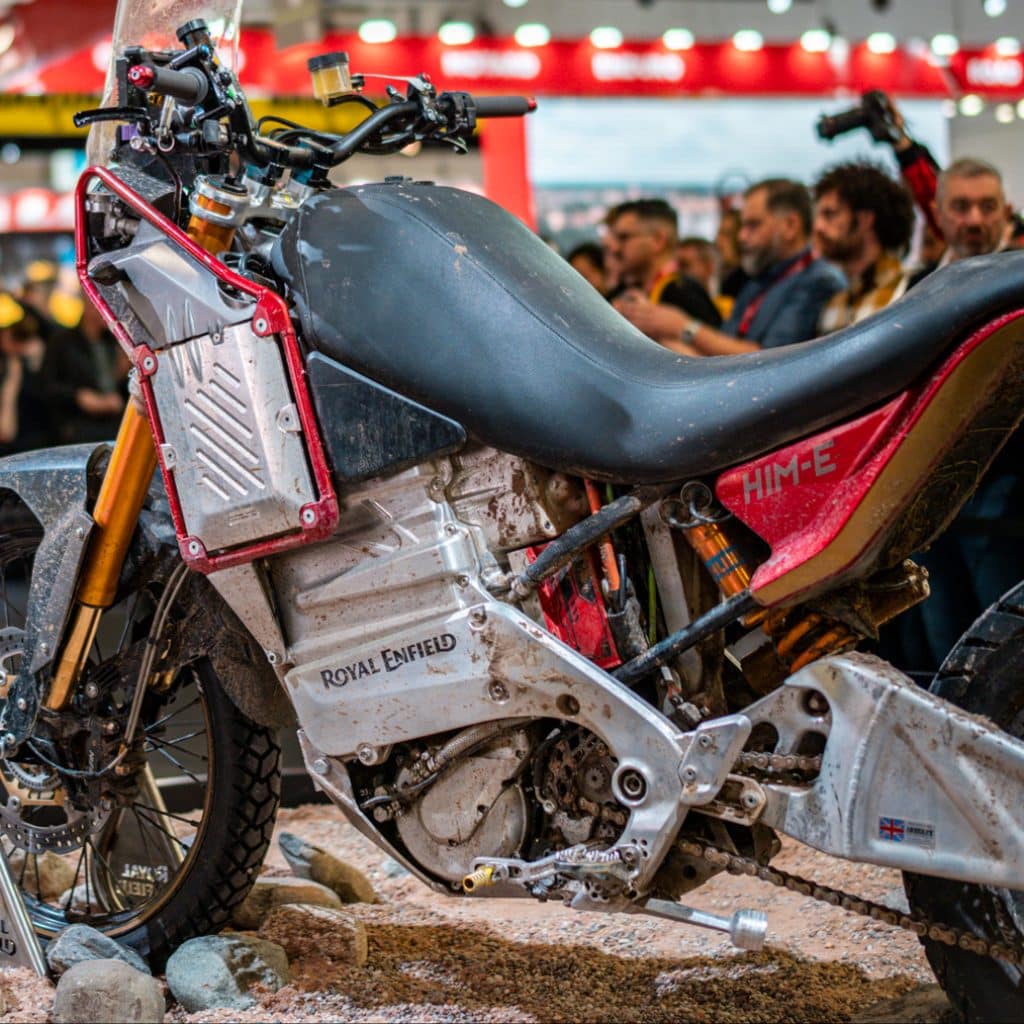
One of the more interesting and unique aspects of the Royal Enfield Electric Himalayan is that its body panels are made from plant fibers, specifically those of the flax plant. Flax is traditionally used to produce food products like linseed oil as well as linen textiles used in swanky summer-weight suits, but it sports a few advantages for bodywork as well.
The first and most obvious is that flax fibers aren’t made from petroleum products, so the Himalayan’s plant-based bodywork makes sense if you’re into EVs for sustainability reasons. The second is that flax-based composites (these panels are made by adding resin to the natural fibers, much like fiberglass or carbon fiber) are typically much stronger than their plastic counterparts, which should translate to less cracked panels or broken tabs should Enfield actually put this material into production at some point.
The Royal Enfield Electric Himalayan is Part of A Larger Plan
Another lesser-known fact about Royal Enfield is that they’ve been working on a handful of sustainability-focused projects, particularly around the small villages and commutes in the mountains that the Himalayan takes its name from. These include organizing local cleanup efforts, promoting sustainable tourism in the region, and investing in responsible farming practices.
“This motorcycle is only just a part of a much bigger sustainable ecosystem of exploration and adventure that we are working on in the Himalayas. From green charging pit-stops, to our responsible travel initiative, from creating self-sustaining communities to collaboration with UNESCO to preserve the intangible cultural heritage of the Himalayan region, there are a lot of initiatives we are passionately driving”
B Govindarajan, CEO of Royal Enfield
The comment about EV chargers in the region is particularly interesting, as this is one of the main factors currently making electric adventure travel such a challenge. We experienced this first hand when attempting the Colorado BDR on a pair of Zero DSR electric dual sports back in 2021, and while we ultimately managed to complete the ride on battery power alone, we were more-or-less coasting back into town on several legs of the journey.
Mario Alvisi, Royal Enfield’s “Chief Growth Officer for EVs” alluded to something similar at the time of the release, stating:
“The Electric Himalayan Testbed is much more than a design concept. For us, this is our vision and a glimpse of what to expect from us in the future. There is a much larger electric mobility blueprint that is being brought alive at Royal Enfield as we continue to work on multiple “electrifying” expressions of pure motorcycling.”
The prospect of unsupported electric adventure touring through the Himalayan mountains is tantalizing to say the least. We don’t expect to see this become a reality anytime in the near future, but it’s nice to know someone with the budget and influence of Royal Enfield is involved in the process.
But What About Stark Future?
Back in January, we shared the news that the folks at Royal Enfield dropped a roughly $50 million investment into Stark Future (makers of the Stark Varg) in exchange for a 10% stake in the company and a seat on their board of directors. While Enfield has yet to confirm or deny that their new prototype benefits from any shared technology between the two brands, we know that their original aim was to “collaborate” with Stark on future EV projects, and the timing seems about right to us.
Truth be told, we don’t see any obvious similarities between the two bikes, but we can’t help wonder what lurks beneath the polished cases of the electric Himilayan. While the Varg is by no means a smart platform for long-distance adventuring, we know Stark has produced some of the lightest and most energy-dense components on the market. The ultra-slim “flying V” battery found in the Varg granted us around 50 miles of easy-going trail riding (a roughly 10% improvement over the Alta Redshift), so we can only image what those same cells and technology could do inside the Himilayan’s sizeable battery box.

